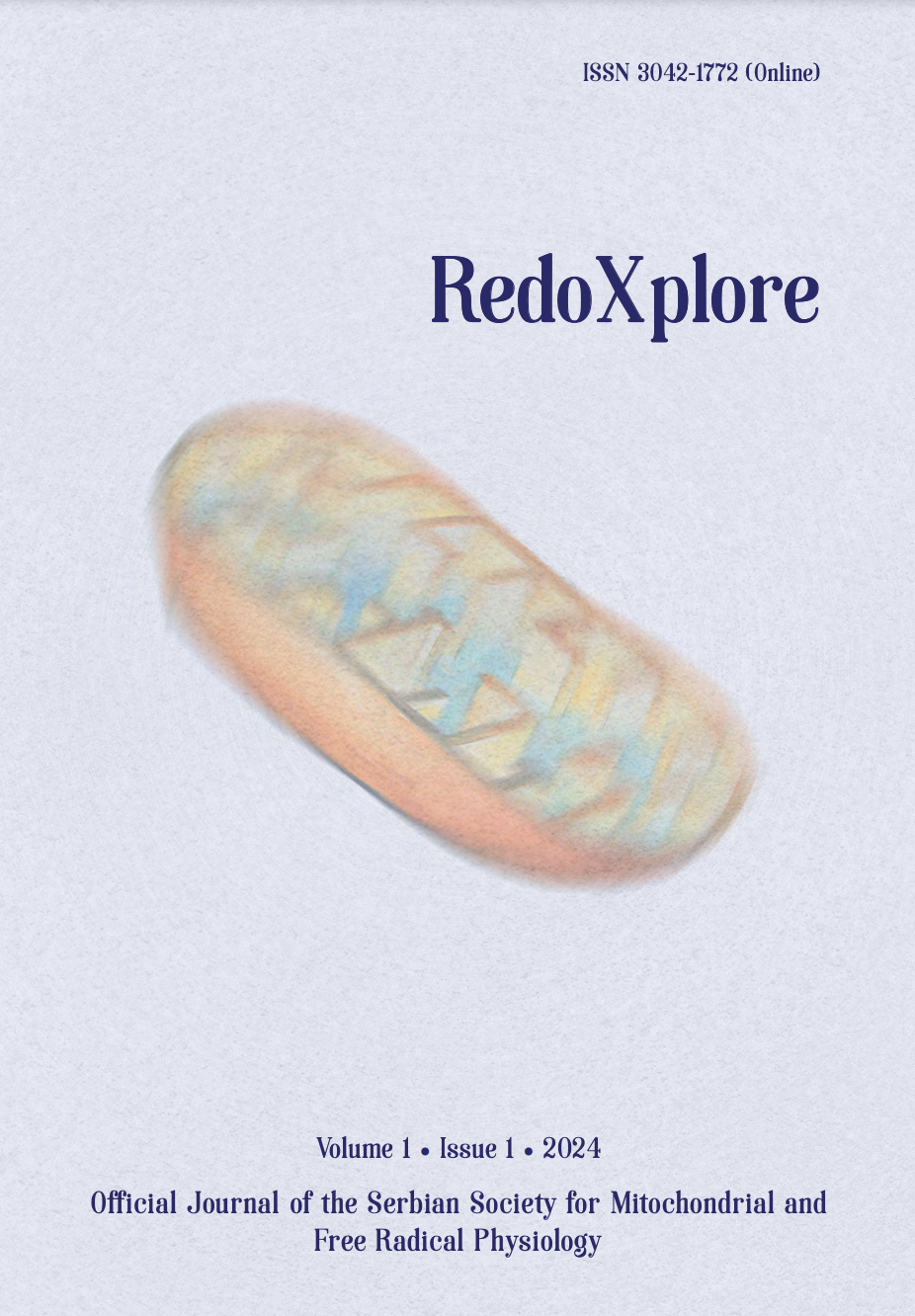
More articles from Volume 1, Issue 1, 2024
REDOX AND METABOLIC REPROGRAMMING OF BREAST CANCER CELLS AND ASSOCIATED ADIPOSE TISSUE - THE CORNERSTONES OF ADAPTIVE TUMOUR BEHAVIOUR
INSULIN MODULATES MITOCHONDRIAL STRUCTURAL AND FUNCTIONAL MOSAICISM IN BROWN ADIPOCYTES
NITRITE MITIGATES OXIDATIVE BURST IN ISCHEMIA/REPERFUSION IN BRAIN SLICES
NITRIC OXIDE, SUPEROXIDE AND PEROXYNITRITE – REDOX REGULATION OF THE CARDIOVASCULAR SYSTEM BY NITRO-OXIDATIVE STRESS AND S-NITROS(YL)ATION
DIETARY NITRATE AS PIVOT ON THE GUT MICROBIOTA-HOST REDOX COMMUNICATION
EXERCISE-INDUCED SYSTEMIC RESPONSE: THE ROLE OF CIRCULATING EXTRACELLULAR VESICLES
Department of Movement, Human and Health Sciences, Foro Italico University of Rome , Rome , Italy
Editor: Bato Korac
Published: 29.08.2024.
Keynote lectures
Volume 1, Issue 1 (2024)
Abstract
Regular physical exercise (PE) leads to a systemic adaptation to redox homeostasis perturbation, one of the hallmarks of exercise adaptation. Studies have shown that PE can alter the molecular composition of extracellular vesicles (EVs), impacting their ability to communicate with other cells and modulate physiological processes. EVs circulating in the body and secreted from various cell types, including skeletal muscle cells, contain various regulatory molecules and mediate intercellular communications and tissue cross-talk. Considering that the health-related benefits of a physically active lifestyle are partially driven by various bioactive molecules released into the circulation during exercise, collectively termed “exerkines”, there has been a rapidly growing interest in the role of EVs cargo as “carriers” in the multi-systemic, adaptive response to exercise. Indeed, a potential mechanism by which plasma EVs released during exercise impact ageing and diseases related to redox impairment is increased delivery of redox components, such as redox transcription factors and antioxidants. This presentation will offer a general overview of the biology of exercise-induced EVs and their putative role in health maintenance and disease prevention, with a focus on redox homeostasis control.
Citation
Copyright

This work is licensed under a Creative Commons Attribution-NonCommercial-ShareAlike 4.0 International License.
Article metrics
The statements, opinions and data contained in the journal are solely those of the individual authors and contributors and not of the publisher and the editor(s). We stay neutral with regard to jurisdictional claims in published maps and institutional affiliations.






